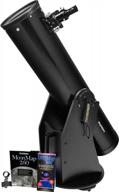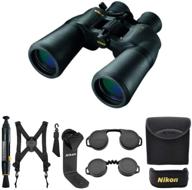
Review on 🔭 Sky-Watcher AZ-GTi with SkyMax 102 – Go-To Alt-Az Tracking Mount for Time-lapse and Panoramas – WiFi Enabled App Control by Trey Gilbert

Good scope and mount for beginners but not without problems
One thing I was a bit disappointed with is that the OTA in this mount kit is slightly different than the standalone OTA sold by Skywatcher . This is not immediately apparent from the Skywatcher website. After the scope arrived I took a closer look at the pictures on the website and the rear cell is different in standalone and combo. I contacted Skywatcher and they confirmed (quite quickly in their defence) that while the cells in this OTA version are identical they are not metallic and cannot be collimated by the user but must be sent to a service. Apparently Mak-Cas telescopes rarely need collimation so I hope this doesn't become a problem, but I find it quite sneaky that the websites don't clearly mention this fact. I've never come across this, although I've studied this telescope and mount quite extensively, so thought I'd mention it here. I'm new to astronomy and not quite sure what to expect from a beginner telescope and Goto mount. The 102mm Mak-Cas OTA is really small, light weight and quite easy to use. Seeing the details of Jupiter and Saturn's rings is a real treat. The optics seem to be quite good and with good collimation. The telescope is good for planets, double stars, etc., but dimmer objects are a problem due to the high F (f/13), especially in urban skies with a lot of light pollution, like mine. The poppy can be used for terrestrial observations. also watch. You'll probably want to buy a 32mm Plossl for the widest field of view, and even then you'll have 40x magnification, which is quite a lot, but it works. I also have the correct 45° prism so the views don't mirror. As for the mount, I'm less sure how to feel as I have no experience with other goto mounts. Setting up the mount and connecting to Wi-Fi was pretty easy for me. Sometimes I feel like I'm losing my Wi-Fi connection, but this doesn't affect the calibration in an obvious way and I can just reconnect and continue. Rotating with the phone's controls is a little tricky, as there's obviously no tactile feedback and the buttons aren't right on the edges of the phone, but it's certainly manageable. I'm less sure about the fixation accuracy. I use it in alt az mode and try my best to align it and point north and then go through the north plane or two or three stars. The process is not difficult and the object seems well tracked once found. Other targets in the immediate vicinity can also be detected straight ahead (with some correction by the field of view in the eyepiece). However, something far away in the night sky can almost never be seen directly with a telescope, but will be deflected by at least a degree or two and very often much more. Since the 102mm Mack's maximum field of view is about 1.2° (with a 32mm Plössl eyepiece), this means I have to manually adjust every time I face a new target when it's not is near. With bright objects this isn't a huge problem, but with something faint it gets a bit annoying and I'd usually aim for a nearby bright star first, center it before moving on to something dimmer. As said, once an object is found the mount seems to track it fairly well (although I haven't attempted longer observations for several hours). something is wrong with my mount. I have noticed that rotating the mount axis by hand despite the clutch being fully disengaged is quite sticky and has uneven resistance in the azimuth axis. However, when I turn the motor(s) on, I don't notice any obvious problems (e.g. the motor becomes unusually noisy, whines, etc.). I've also noticed that sometimes (not always!) the gears seem to have play along the azimuth axis (when the clutch is fully depressed). Not sure why. Turning on the azimuth axis with the motors eventually solves the problem. So if the accuracy issues I'm seeing are in the expected range for this mount, I can't tell if they're not a deal breaker for me, but I don't have experience with other goto mounts to compare this. I didn't attempt to use this mount with AA batteries, opting instead for an external battery (Celestron Powertank Lithium LT) which also powers my phone (when needed) and never had the remotest chance of running out (probably would be ok for a couple of nights). The mount can be used entirely by hand, which I'm not sure other Goto Alt-Az mounts can do. I forgot my battery earlier...so at least I got some observation that night. You can also use the semi-automatic mount manually. This is called FreedomFind and it allows you to manually move the scope without losing alignment. This feature has to be enabled pretty deep in the settings and can reduce overall accuracy so I don't really use it, but I can see how handy it can be. The control app is pretty primitive, but worked well for me for the most part. I would prefer to control the mount from a planetarium app like SkySafari Pro. In principle this is possible, but you need to run the Skywatcher SynScanPro app together with SkySafari for it to work. Apparently this is not possible on iOS devices. Therefore, you need two separate iOS devices or one Android device for this to work. Strangely, after alignment in the SynScanPro app, I can control the mount via SkySafari on my iPhone, but the alignment is disabled and doesn't seem to update in SynScanPro. Quite an unexpected limitation for iOS devices anyway, but I'm going to buy a tablet one day anyway. Overall I am satisfied with this telescope and the mount. I want a telescope with a fairly solid tripod and goto mount in a relatively light and compact package. The mount seems to have its limitations and disadvantages, but overall it allows me as a beginner to explore the night sky quite comfortably.
- Binoculars and scope
- Slightly dented
New products
Top products in 🔭 Binoculars & Scopes

Dcorn 7'' Digital Microscope with 1200X Magnification, 12MP Camera, and 32GB 🔬 TF Card for Adult Hobbyists: Soldering, Coin Collecting, and More - Windows/Mac Compatible

11 Review

Explore The Night Skies With The Orion SkyQuest XT8 Classic Dobsonian Telescope

12 Review

Enhance Your Stargazing Experience With Orion'S Premium Telescope Accessory Kit (1.25-Inch, Silver)

21 Review

Nikon ACULON 10 22X50 Binoculars Harness

12 Review







